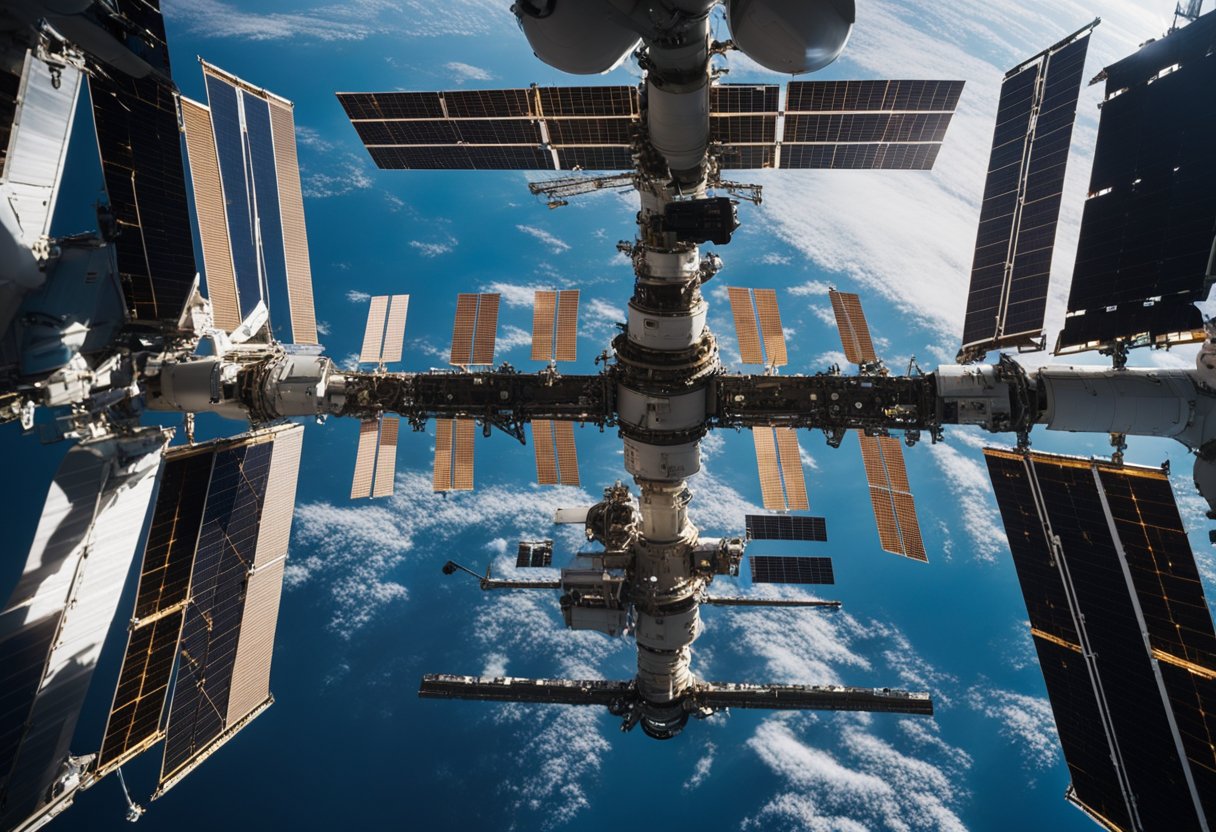
Interactions with the International Space Station crew (ISS) represent a critical component of any mission’s success. From the moment astronauts are selected for a spaceflight, they undergo rigorous training that prepares them not only for the technical aspects of their mission but also for living and working cohesively with a team in the unique, confined environment of the ISS. This preparation is vital as they spend months at a time in space, where effective communication, collaboration, and mutual support are key to maintaining not only the functions of the ISS but also the well-being of its crew.
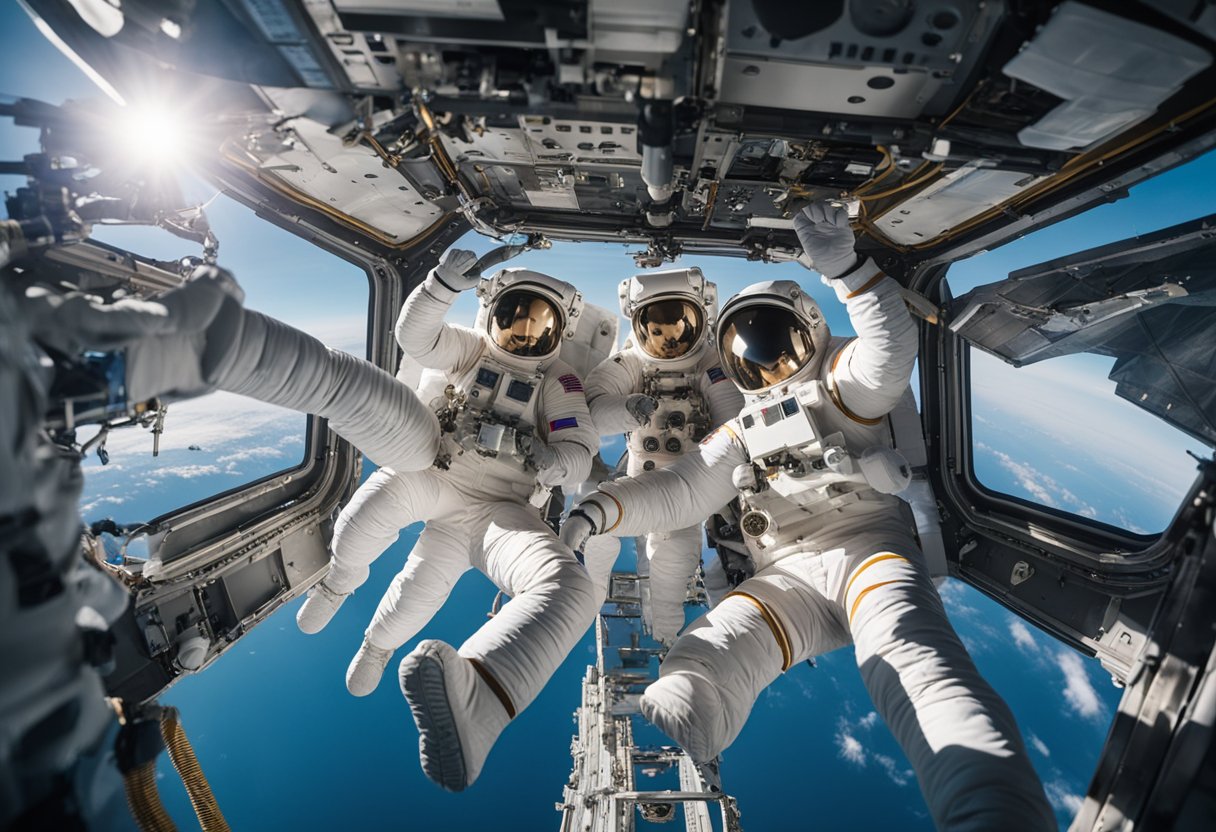
Our participation in space missions extends beyond mere technical support; it involves fostering international collaboration and adhering to policies that ensure the success and safety of human spaceflight. As we adapt to life in space, we also engage in valuable research that can benefit humanity and contribute to our knowledge of living outside of Earth’s atmosphere. Training for emergency scenarios is crucial for the crew to ensure their readiness to respond to any situation that may arise on board. Moreover, the process of returning to Earth is a complex and precise operation, marking the conclusion of an astronaut’s journey, which includes re-acclimating to Earth’s gravity and environment.
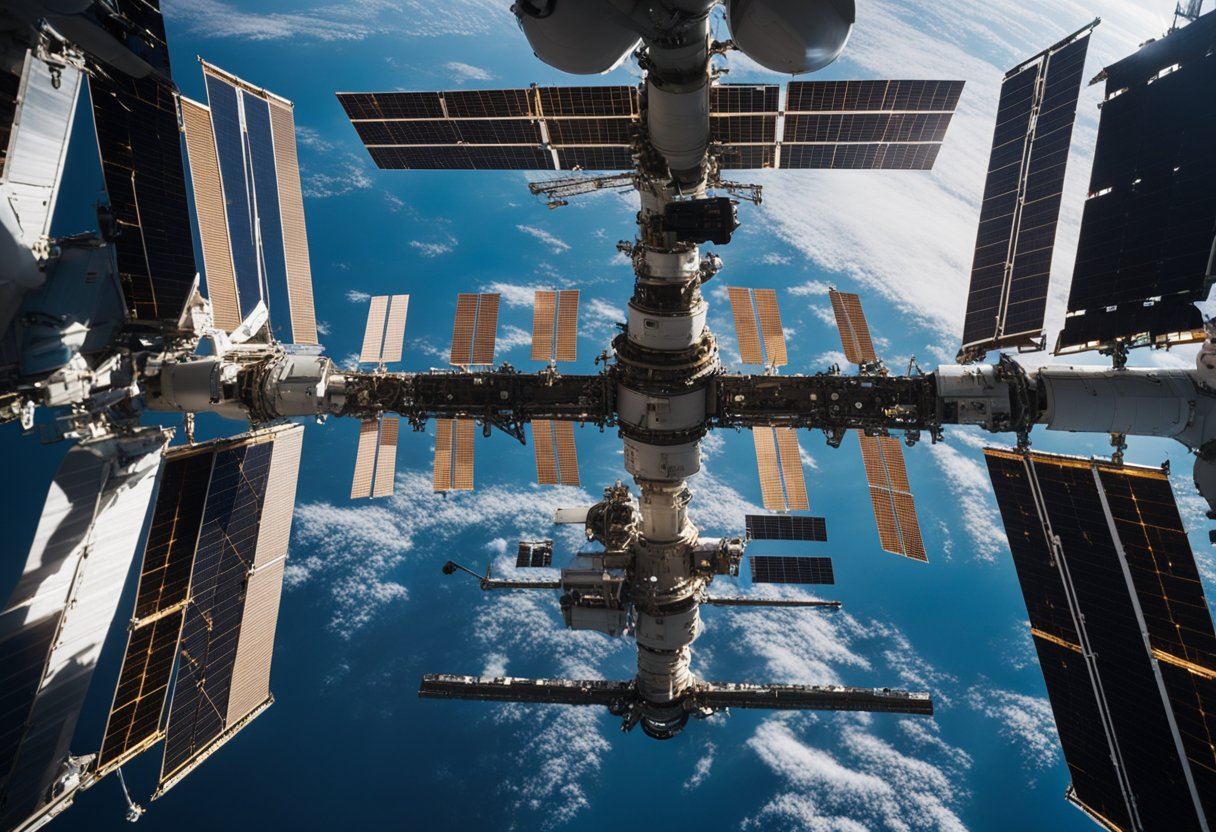
In this section, we delve into the International Space Station (ISS) and its evolution, the sophisticated structure that it is today, and the crucial roles that its crew of astronauts and cosmonauts assume.
The ISS represents a monumental leap in space exploration and international cooperation. Its inception dates back to 1998 when the first module, Zarya, launched from a Russian space facility. Successive modules were added over the years, facilitated by various space shuttles and rockets, creating the most complex space structure ever built by humankind. This modular growth marks the historical lineage of today’s fully functional space station.
As of now, the ISS boasts a complex architecture with 16 major modules that serve various purposes. These modules include laboratories for scientific research, sleeping quarters for the crew, and docking ports for incoming flights. The station has been equipped with newer technology, including the installation of International Space Station Roll-Out Solar Arrays, which augment its power capacity.
Typically, an ISS crew includes a mix of men and women serving as astronauts and cosmonauts. Each member has specified duties such as conducting experiments, maintaining the station’s systems, or performing spacewalks for repair and upgrade missions. The crew works in rotational shifts, with missions like NASA’s SpaceX Crew-8 planned meticulously to ensure a continuous human presence on the ISS. Responsibilities also involve outreach, as crews engage with various educational institutions and enthuse potential space travellers, with platforms like SpaceVoyageVentures.com providing insights into the burgeoning field of space tourism.

Our journey to the International Space Station (ISS) encompasses rigorous selection and training, a precise launch sequence, and the adaptation to a microgravity environment. This journey not only reflects the pinnacle of professional achievement for astronauts but also marks a significant milestone in space exploration.
Our selection process is highly competitive, with numerous applicants undergoing extensive evaluations. Once chosen, astronauts are subjected to intense training which includes simulated ISS conditions, spacewalk practices, and emergency procedures. Our training duration varies depending on the mission’s complexity; however, we ensure every crew member masters the necessary skills.
Our journey to the ISS commences with a launch aboard a spacecraft like the Soyuz or a Space Shuttle. These crafts are meticulously prepped and the launch sequence is carefully executed to ensure a successful mission. Our craft’s docking with the ISS is a delicate process that we handle with precision. For instance, NASA astronauts are known to travel back to Earth inside a SpaceX Crew Dragon capsule.
Once aboard the ISS, our primary challenge involves adapting to microgravity. This adaptation affects everything from daily tasks to complex research experiments. Our bodies undergo various changes that we monitor closely, ensuring that the crew remains healthy during their mission, which can range in crew size.
We, as a species, have always been fascinated by the prospect of space travel and living beyond Earth. The International Space Station (ISS) serves as a home, laboratory, and observatory for astronauts who partake in missions of exploration and scientific discovery. Adjusting to life in microgravity presents unique challenges and requires a rigorous daily routine to maintain physical health and operational efficiency.
Our daily existence on the ISS is centred around a structured schedule, which integrates various scientific research activities along with regular maintenance of the station’s systems. Science is an integral part of each day, as we conduct experiments that require the unique conditions of microgravity. Our living quarters are compact, with individual modules providing space for both rest and personal time amongst the rigour of mission duties.
To mitigate the adverse effects of microgravity on the body, such as bone density loss and muscle atrophy, exercise is paramount. We’re committed to rigorous, daily exercise routines aboard the ISS, utilising specialised equipment like the Advanced Resistive Exercise Device (ARED) and the Treadmill with Vibration Isolation and Stabilization (TVIS). Generally, each crew member exercises for approximately two hours per day to maintain our physical health.
Providing for proper nutrition and personal care in space is critical for us. The meals we consume are carefully prepared to ensure that they are rich in nutrients and appropriate for microgravity conditions. Besides sustaining our physical health, these meals offer comfort and a sense of normality. Personal hygiene routines are also adapted for microgravity, utilising no-rinse body wipes and specially designed toiletries to maintain our well-being.
Taking note of these aspects of daily life for astronauts not only informs our understanding of spaceflight experience but can also enlighten the curious minds that follow the ventures of SpaceVoyageVentures.com, a site documenting the strides being made toward making living in space a part of humanity’s broader experiences.
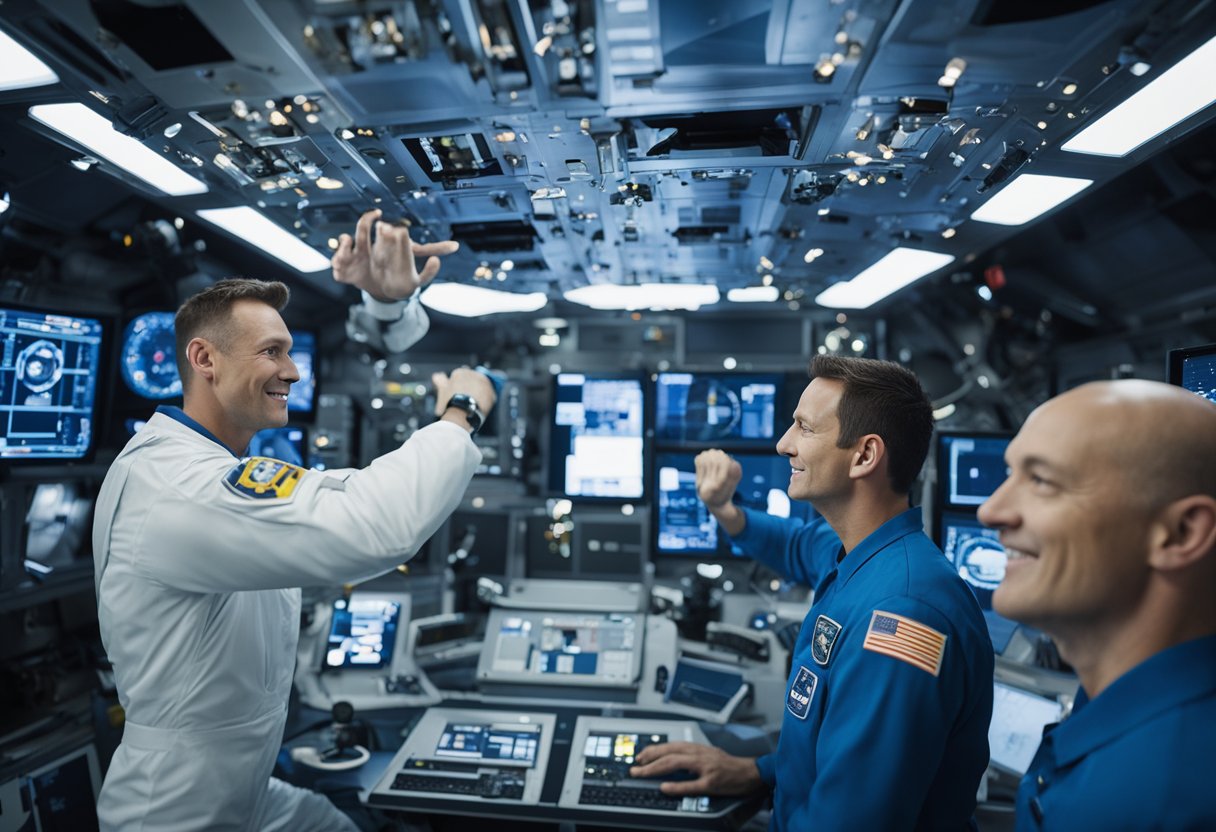
In long-duration space missions, the efficacy of communication and team dynamics are paramount. We understand that these aspects are critical for mission success and psychological well-being of the crew.
Our ability to communicate effectively amongst ourselves within the space station relies on robust interpersonal relations and clear protocols. It’s essential to address different aspects including task-related exchanges and emotional support, combating the effects of isolation and confinement. Effective team dynamics are fostered through shared experiences and a mutual understanding of the unique conditions in space, much like the camaraderie discerned amongst astronauts during space missions.
Maintaining a consistent and reliable line of communication with mission control is vital. With inevitable communication delays, we adhere to standardised procedures to transmit information efficiently. The delays can range from seconds to minutes depending on our orbital position relative to Earth, thus pre-planned communication protocols are essential.
The leadership structure within our space crew is designed to be clear yet flexible. The commander leads with a situational leadership approach, adapting to the complexities of tasks and stressors faced. The hierarchy is understood by all crew members, promoting a streamlined decision-making process and reinforcing the chain of command, critical in both routine operations and emergency situations.
Spaceflight poses unique challenges for astronauts, not just physically but also psychologically and socially. These aspects are crucial for the success of long-duration missions and the well-being of the crew.
We understand that prolonged isolation and confinement can lead to significant stress for astronauts during space missions. Individuals must have strategies for coping with feelings of separation from loved ones and the monotony that comes from the spacecraft’s confined space. Evidence shows that maintaining a routine and engaging in leisure activities can aid in mitigating these effects. The psychology and mental health of the spaceflight environment are areas where continuous research is critical to developing effective coping mechanisms.
When forming a space station crew, we consider cultural differences, as they can impact group dynamics and cohesion. Astronauts come from a variety of cultural backgrounds, and managing this diversity is key to maintaining a cohesive team. It’s essential to foster an environment where all crew members feel valued and understood. Effective communication and mutual respect are the bedrocks of successful interpersonal interaction in these settings. Studies like those on the International Space Station give us insight into managing these differences, as described in the Understanding the Psychological Hazards of Spaceflight on the Space Station article.
We recognise that relationships and interpersonal interactions can be significantly affected in the space station environment. The same proximity that can enhance interpersonal attraction and camaraderie can also lead to friction. It’s our responsibility to ensure that astronauts are prepared to deal with the intricacies of these relationships. Training in space psychology is implemented to help crew members communicate effectively and manage any interpersonal issues that arise. As future space tourism, such as that showcased on SpaceVoyageVentures.com, becomes more common, the lessons learned in professional astronaut corps will be invaluable in preparing tourists for their journeys.
Space exploration has bestowed remarkable scientific insights regarding microgravity and broadened our cognisance of space psychology. Our cumulative efforts have cemented a pivotal legacy in space research.
The International Space Station (ISS) serves as a unique laboratory, where we have conducted a plethora of scientific experiments in microgravity. This environment allows us to observe phenomena not possible on Earth. For instance, in the realms of material science and biology, behaviours and properties that gravity masks are revealed.
Our understanding of astronaut health, both mental and physical, has seen significant advancements due to research done aboard the ISS, in collaboration with NASA, ESA, JAXA, and CSA. We’ve been able to tailor countermeasures to the well-documented psychological stressors of extended missions.
Scientific studies and health assessments are not just pivotal for the astronauts; they’re a substrate for our future in space tourism, as chronicled by burgeoning sites like SpaceVoyageVentures.com. Our dedication to research uplifts the safety and success of both current and future space endeavours.
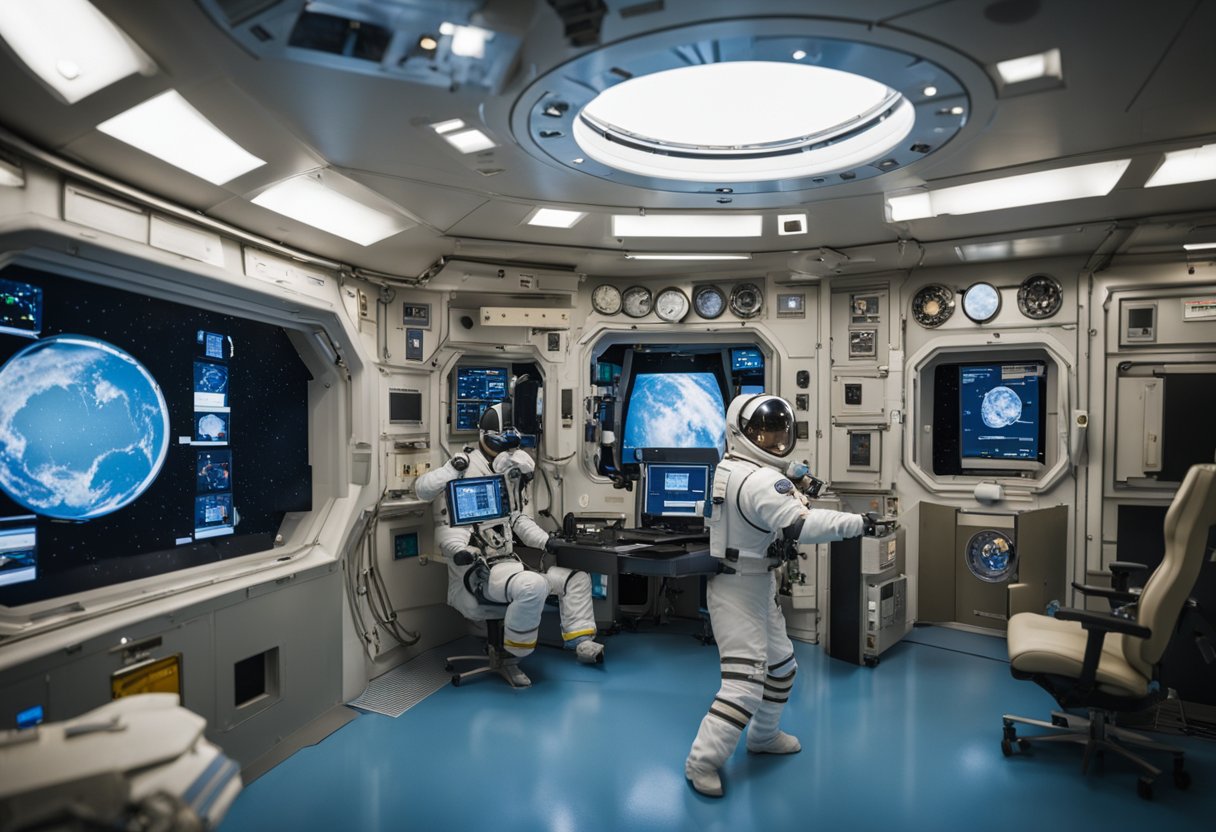
In preparation for space
When the mission nears its end, we turn our focus to the meticulous procedures and critical operations required to ensure our crew’s safe return to Earth.
Before we can welcome our astronauts home, extensive preparations for re-entry begin well in advance aboard the spacecraft. The Crew Dragon or Russian Soyuz modules, which have been home to the astronauts for the duration of their expedition, are checked for integrity and equipped with re-entry gear. We meticulously inspect life support systems, secure cargo, and monitor weather conditions on Earth to calculate the precise deorbit burn and landing trajectory.
Upon entering the Earth’s atmosphere, the spacecraft undergoes intense thermal and physical stress during re-entry. A series of parachutes deploys to decelerate the module for a safe landing—either in the sea, as is customary for SpaceX recoveries, or on land for the Soyuz. Once on Earth, recovery teams swiftly locate and assist the crew, performing health checks and beginning the process of re-acclimatizing astronauts to Earth’s gravity after their long-duration mission. Our post-mission activities play a crucial role in gathering mission data and preserving the integrity of scientific experiments brought back from space.
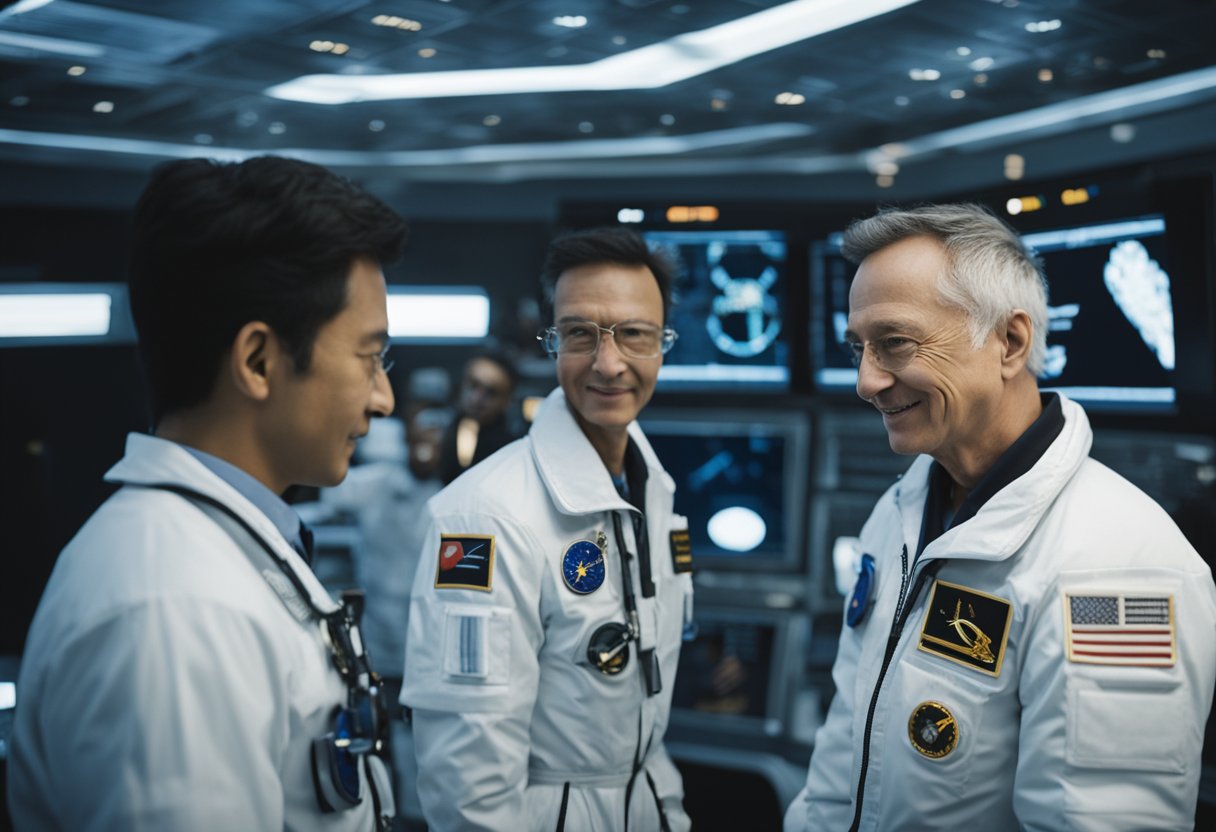
We are about to explore the intricate web of cooperation and regulations that govern the interactions of international space station (ISS) crew members. This involves the unified efforts of various space agencies and the complex global policies that shape their joint endeavours.
Our ISS represents a monumental feat of international collaboration. Space agencies like NASA, Roscosmos, ESA (European Space Agency), JAXA (Japan Aerospace Exploration Agency), and CSA (Canadian Space Agency) operate under comprehensive agreements which outline their roles and responsibilities. NASA plays a pivotal role in this partnership, leading many of the cooperative efforts. Similarly, Roscosmos contributes significantly to the ISS operations, notable for their launch capabilities. These agencies share resources, risks, and rewards, ensuring a synergistic approach to space exploration and operation of the ISS. Their collaborative efforts are reflected in every aspect of life aboard the ISS, from daily activities to extraordinary spacewalks and research projects.
Policies governing crew interactions are rooted in the principle of peaceful international cooperation. They must align with the International Space Station Intergovernmental Agreement (IGA), which details the legal framework for the station’s operation. The IGA ensures that all partners contribute to the development, operation, and utilisation of the shared orbital laboratory. National space agencies must navigate these policies, crafting protocols for crew selection, training, conduct during the mission, and the sharing of research outputs. These policies ensure transparency and fairness in access to the ISS’s facilities while fostering an environment conducive to scientific discovery and technological advancement. Regulations within this framework aim to preempt any jurisdictional disputes by earmarking criminal and civil jurisdiction to the respective astronauts’ country of origin.
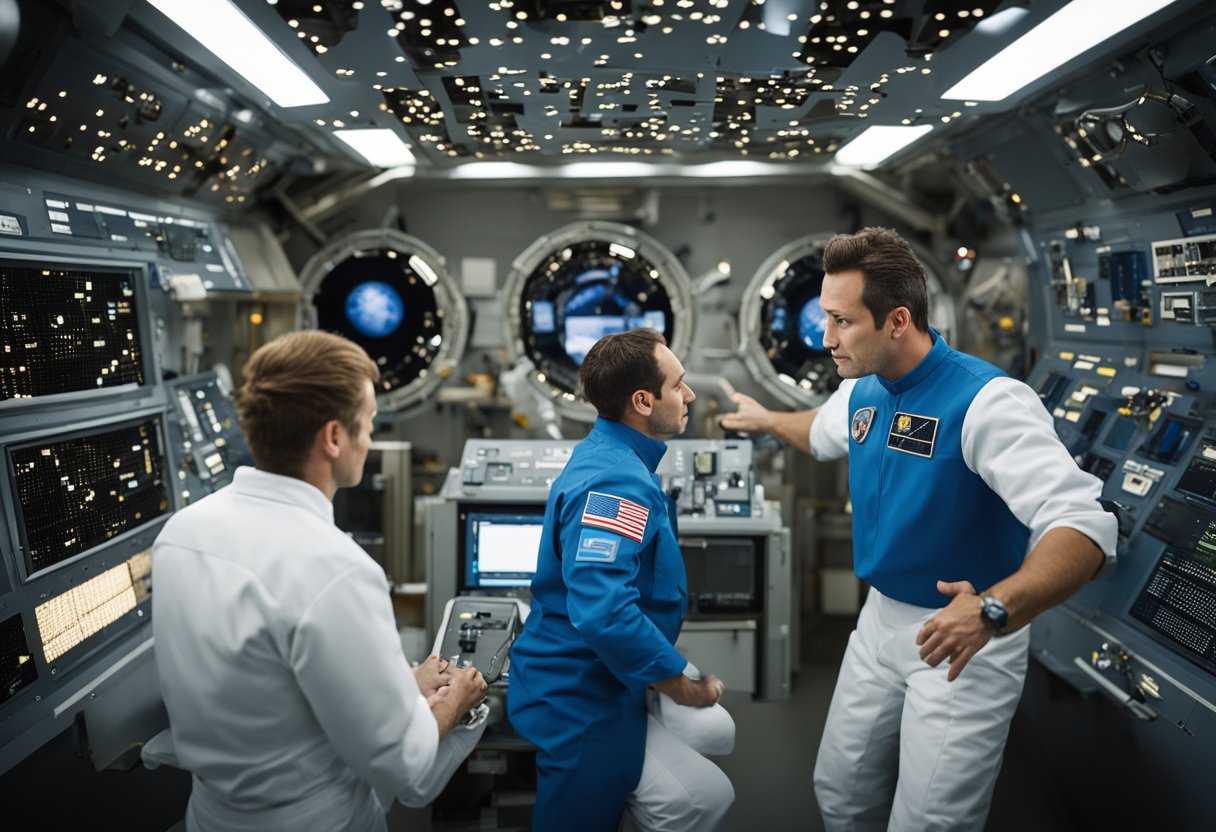
In this section, we explore the planned trajectory for space station missions, considering the key players and technological advancements that will drive the progress of spaceflight.
The pace of human spaceflight is set to accelerate, with the Crew-8 mission representing a step forward for international collaboration in space. As we look to Expedition 70 and beyond, the role of the Commercial Crew Program becomes increasingly crucial. These programmes ensure a constant rotation of astronauts to the International Space Station (ISS), with NASA astronauts Matthew Dominick, Michael Barratt, and Jeanette Epps, in addition to Alexander Grebenkin of Roscosmos, earmarked for future missions to the station.
Technological enhancements to the ISS reflect our commitment to fostering prolonged human presence in space. Innovations span from life-support systems to experimental platforms that will serve expeditions, like Expedition 7, which laid groundwork years ago. We integrate advancements in habitats, satellite communication, and propulsion, ensuring that missions are not only safer but also more efficient.
Our international goals for spaceflight are ambitious, with an emphasis on sustainability and collaboration. The vision is to establish a blueprint for future exploration to the Moon and, eventually, to Mars. SpaceVoyageVentures.com showcases our collective aspirations and provides a glimpse into the emerging era of space tourism, aligning with our long-term objectives of making spaceflight more accessible to civilians.
In this section, we address some of the most common inquiries about the daily lives and communications of astronauts aboard the International Space Station (ISS).
Astronauts use a variety of systems to speak to one another inside the ISS. They often use intercoms which allow them to communicate between different modules, and they may use radios when operating outside the ISS during spacewalks.
Communication between the ISS and ground control relies on a network of satellites known as the Tracking and Data Relay Satellites (TDRS). This enables a near-constant exchange of voice, video, and data.
Crew members on the space station can enjoy leisure activities such as watching films, reading books, playing musical instruments, and viewing Earth from the Cupola observation module.
The crew has scheduled opportunities to make private video calls to family and friends. They also have access to email, allowing them to stay in touch with loved ones.
The public can follow the ISS crew through social media updates, live streams of spacewalks and other events, and educational outreach programmes. There are also internet resources documenting current and future space tourism opportunities like SpaceVoyageVentures.com.
Yes, astronauts partake in various educational activities, such as live Q&A sessions with students, to teach and inspire young people about science, technology, engineering, and mathematics (STEM). They also conduct experiments that can be followed by school curriculums globally.